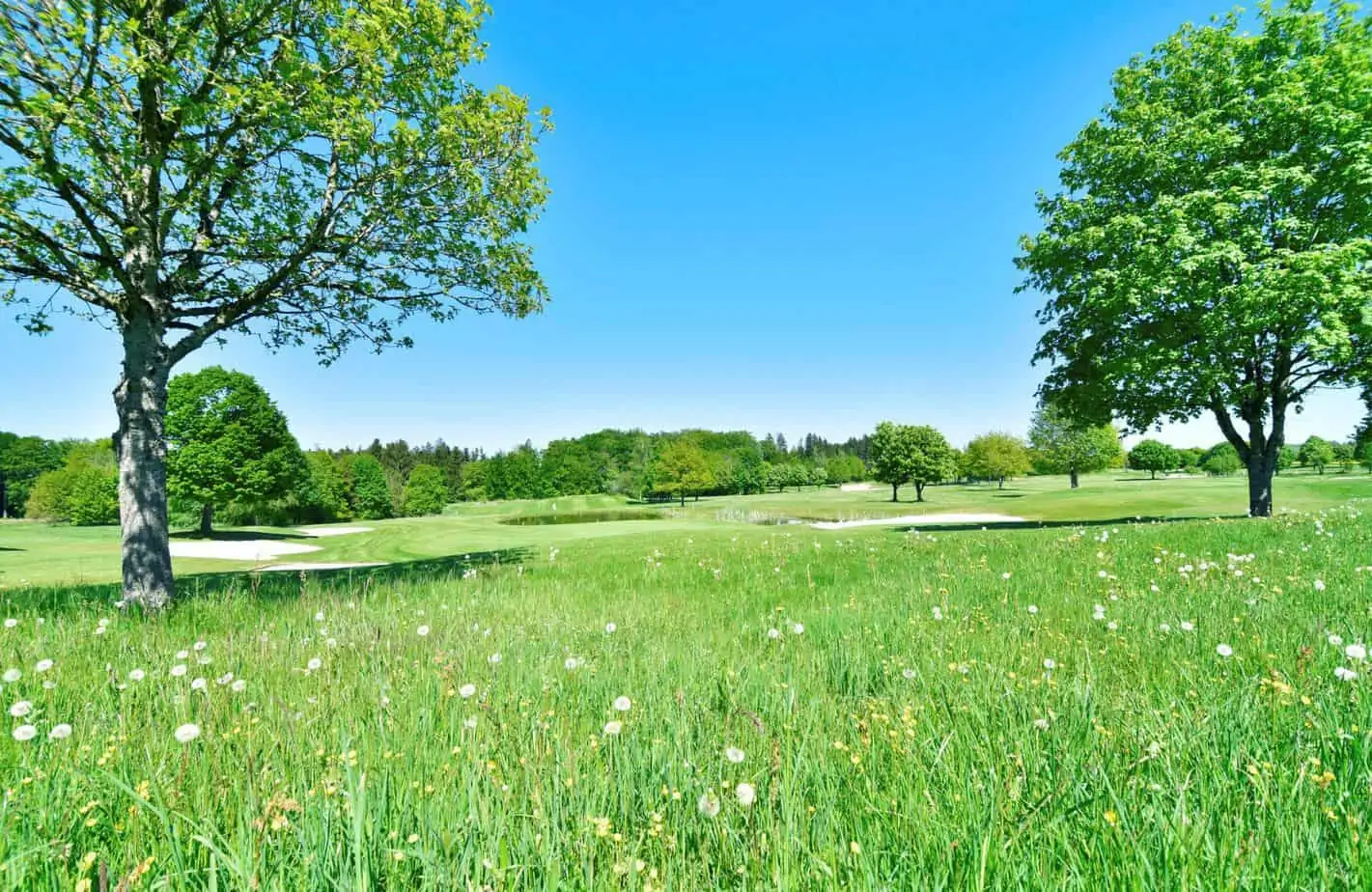MGC part of the international STERF project
A small piece of land on the grounds of the Munich Golf Club as part of an international project. Its title: ” From dense swards to biodiverse roughs .” The scientific analysis was started in Scandinavia in 2017 by STERF (Scandinavian Turngrass Environment Research Foundation) and implemented with the help of the Norwegian Institute of Bioeconomy Research. The question was under which circumstances the biomass on a site can best be reduced. The countries Norway, Sweden, Denmark and Germany are participating. The reduction in biomass is significant insofar as an increase in biodiversity, i.e. the occurrence of plants and animals, on golf courses and green spaces can be associated with it. An example: Biodiversity is promoted significantly more by a nutrient-poor grassland than by classic, thick rough.
Analysis in Strasslach and Norway
The circumstances of the Munich GC were compared to six selected areas in Norway, which also included the Oslo Golf Club, the Oslo University Blindern and the Royal Castle in Oslo. The aim of the bachelor thesis at the Technical University of Munich, written by Krishna Cholleti, was to find out whether factors such as weather or soil conditions are decisive for the development of the biomass or the treatment of the terrain. The ecological biomass of a piece of golf course describes the total mass of living beings and plants occurring in this habitat.
Various variants were tested :
- Mowing twice a year (flail mower), clippings are not removed.
- Mowing twice a year (cutter bar), mowing material is removed immediately after the first mowing and left to dry for a week after the second mowing.
- One-off mowing at the end of August, clippings are removed after a week. The floor is roughened and sawdust is distributed (improved carbon balance).
- One-off mowing at the end of August, clippings are removed after a week. Instead of sawdust, seeds of the Little Rattlepot are distributed.
- One mowing per year with removal of the cuttings.
Do standardized methods really lead to the same results everywhere? Is it therefore possible to increase the biodiversity of an area comparatively easily by using an optimized method to reduce the biomass internationally on green areas and also on golf courses and thus create better conditions?
Comparing the six sites, Krishna Cholleti concludes: “All in all, success in reducing biomass is extremely dependent on the site itself, its treatment and the years.” So: How does the climate behave in a certain region, for example? For the analysis piece on the grounds of the Munich Golf Club, which, for example, stood out due to a relatively high proportion of organic carbon compared to the other areas, a severe drought and heat were particularly important during 2019.
According to Cholleti, it is generally the case that “the quantity of precipitation, the intervals between rainfall and the respective individual characteristics of precipitation are decisive for the development of the biomass.”
In the end, the golf course remains a piece of land in which the growth of certain plants or even the rough areas can only be determined with difficulty using standardized methods. The influences of the climate and the respective soil structure are too great. Nevertheless, the bachelor thesis, when comparing the wasteful treatment variants, comes to the conclusion “that there is a trend towards double mowing as the most effective method”.
Golf meets science
From dense swards to biodiverse roughs; A multiregional experiment on biomass reduction in Germany and Norway; Bachelor thesis by Krishna Cholleti, TUM, Chair of Restoration Ecology, Prof. Dr. Johannes Kollmann, 2020;







